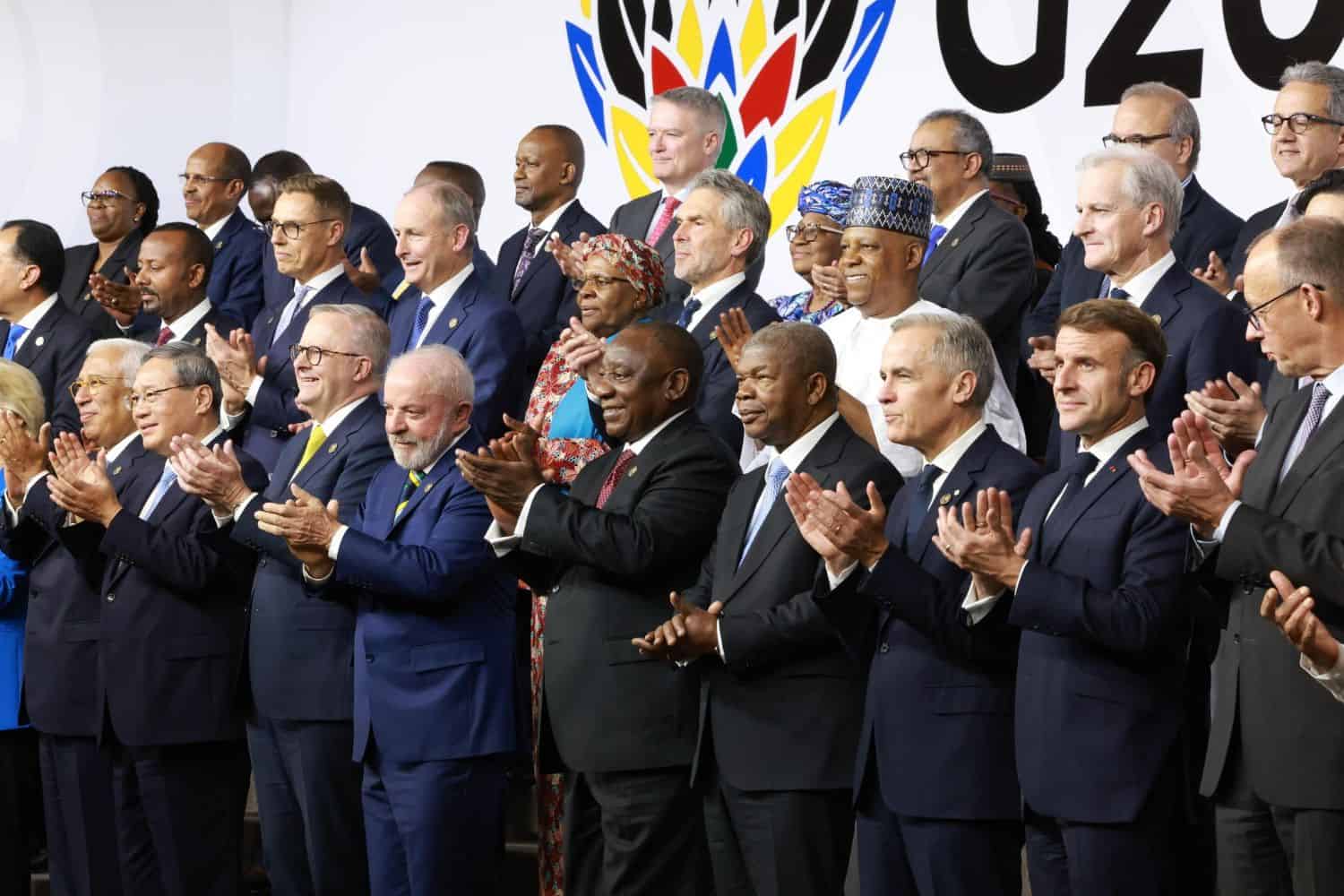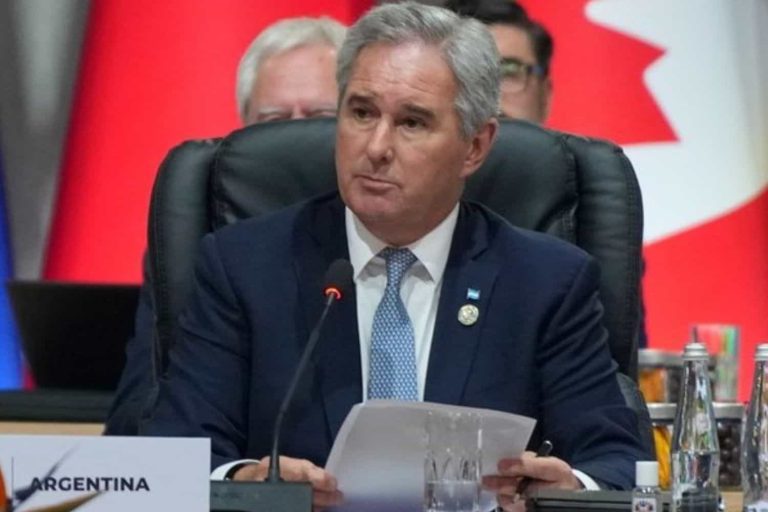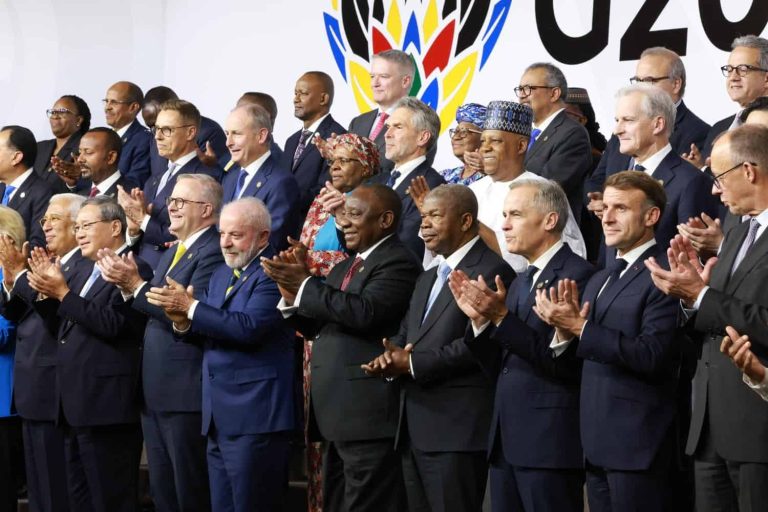
The G20 Leaders’ Summit declaration has been adopted despite the US pulling out.
One of the key factors the leaders agreed on is actively ensuring that less developed countries can manage and repay their debt in the long term without going bankrupt or falling into a financial crisis.
The first day of the G20 Leaders’ Summit held at Nasrec, Johannesburg on Saturday saw the attendance of most members of the group, expect for US President Donald Trump or an official from the States. Despite this, President Cyril Ramaphosa said there has been an overwhelming consensus to adopt the declaration.
In short, adopting a declaration means the 19 countries have agreed on certain decisions, commitments, and priorities, which are outlined in a document.
ALSO READ: South Africa fights fire with fire as G20 presidency to be handed over to US at Dirco offices
Helping low-income countries
The G20 was essentially established with a focus on making the global economy more fair and stable, which includes helping less developed countries.
According to the G20 Leaders’ Summit declaration uploaded by The Herald Nelson Mandela Bay, the group recognised that a high level of debt is one of the obstacles to inclusive growth in many developing economies.
Due to high level of debt experienced by less developed countries, their ability to invest in infrastructure, disaster resilience, healthcare, education and other development needs is limited.
Debt vulnerabilities experienced by low-income countries
“While the risk of a systemic debt crisis appears to be broadly contained, many vulnerable low and middle-income countries face high financing costs, large external refinancing needs, and a significant outflow of private capital,” reads the document.
“These debt vulnerabilities, along with other factors, can constrain their fiscal space, their ability to address poverty and inequality, and their capacity to invest in growth and development. The situation is particularly challenging for many low-income countries, especially those in Africa.”
The group of leaders noted with concern that interest payments on total external public debt have increased significantly and have more than doubled over the past decade for low-income countries (LICs).
Commitment by G20
The document outlines that the group remains committed to supporting low- and middle-income countries to address debt vulnerabilities in an effective, comprehensive and systematic manner.
“We reiterate our commitment to further strengthen the implementation of the G20 Common Framework (CF) for debt treatments beyond the Debt Service Suspension Initiative (DSSI) in a predictable, timely, orderly, and coordinated manner,” reads the document.
The group highlighted the call to enhance debt transparency from all stakeholders, including private creditors.
ALSO READ: Finland’s president tells G20 Summit that world’s power structure is ‘unfair’
IMF-WorId Bank Low-income Countries Debt Sustainability Framework
The document outlines that the group of leaders supports the ongoing review of the International Monetary Fund (IMF)-WorId Bank Low-income Countries Debt Sustainability Framework (LIC-DSF).
The framework is expected to result in further improving the methodology underpinning the IMF-World Bank Debt Sustainability Analysis (DSA) for LICs and thus contribute to understanding and addressing debt vulnerabilities more effectively.
The LIC-DSF is a system used to check whether low-income countries can handle their debt without falling into financial trouble.
However, a review of it has recently been commissioned because debt vulnerabilities in many low-income countries have increased and there’s growing concern that the current framework isn’t capturing all the risks or giving a full picture of a country’s debt burden.
Managing debt level
The review includes improving how baseline projections are judged, including “realism tools” for macro assumptions. Ensuring that all relevant public debt is included in the analysis—not just external debt, but domestic debt, state-owned enterprises’ debt, etc.
A joint IMF–World Bank note suggests a three-pillar strategy to address debt issues in LICs.
- Pillar 1: Structural reforms + domestic resource mobilization (help countries grow, tax more, improve governance)
- Pillar 2: External financial support (more concessional loans, grants, multilateral aid)
- Pillar 3: Measures to reduce debt service burden (especially for those who are not insolvent but struggling with payments)
Use of crisis resilient debt clauses
The G20 Leaders’ Summit declaration document added that they have noticed that some countries are choosing to include special debt rules that help them during crises.
“We note the voluntary use of crisis resilient debt clauses where appropriate, which can provide vital breathing space and liquidity,” reads the report.
“We note the efforts to explore the consideration of the use of liability management operations and debt-for-development, debt-for-climate, or similar swaps on a voluntary and case-by- case basis, with a balanced view on their benefits and limitations to help strengthen debt sustainability.”
NOW READ: ‘There’s no reason why SA should not participate in G20 Summit in US’ – Dirco



